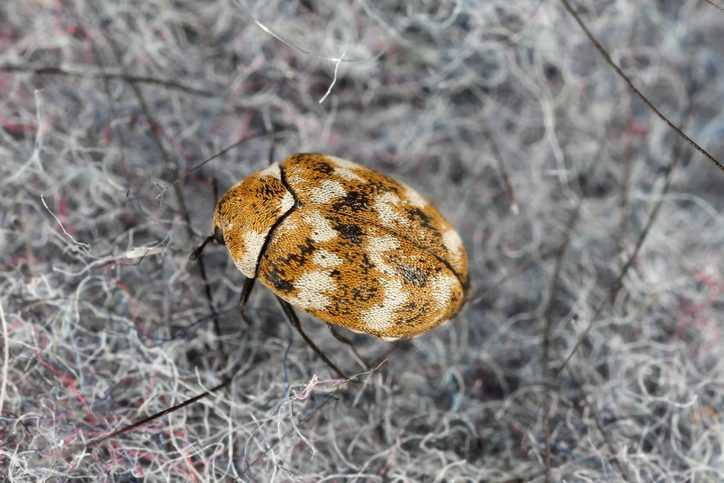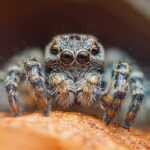If you’ve ever spotted a beetle in the house, you’re probably wondering how it got there. Knowing how to identify small beetles in your house can help you find the root cause of an infestation and prevent future encounters with these tiny but destructive pests.
Carpet Beetles
The carpet beetle is a common pest. Black or decked out in mottled colors, these bugs measure 1/16 to 1/8 inches when fully grown. As you might suspect, they’re often found in carpets; however, you may find them lounging on windowsills in springtime. Adult carpet beetles survive on flower pollen, but carpet beetle larvae feast on the following:
- Fur
- Silk
- Wool
- Leather
- Feathers
Carpet beetle larvae choose these and other natural materials because they contain keratin. Keratin is a protein they can easily digest. They usually pass up synthetic materials and cotton, unless these fabrics are blended with wool or stained with food or body oils.
People sometimes blame clothing damage on moths because they aren’t aware that they have a carpet beetle infestation. This leads to more damage, especially since females lay 50 – 100 eggs near desirable materials to feed larvae.
Salt grain-sized pellets and shed skins are common signs of carpet beetles. Prevent infestations by dry-cleaning or washing clothes immediately, vacuuming regularly, and clearing pet hair accumulations from vents and baseboards.
Cigarette Beetles
Sometimes called tobacco beetles, these bugs can be found near tobacco leaves and stored tobacco products. The cigarette beetle is frequently confused with the drugstore beetle thanks to their similar appearances. The cigarette beetle’s serrated antennae may help differentiate the species a little, but accurate identification requires pest professionals.
Cigarette beetles are reddish-brown with a plate covering their heads. Their oval bodies are only about 1/8 inch long.
They are also notorious for destroying tobacco, stored foods, and common household items like the following:
- Rice
- Nuts
- Flour
- Pet food
- Bookbinding
- Furniture paste
- Raisins and dates
- Prescription drugs
Drugstore Beetles
Unlike its near-twin, the cigarette beetle, the drugstore beetle has a striated body and straight antennae with three segments at the end. This humpbacked beetle measures only about 1/10 inch long and is considered a pantry pest. These bugs typically head indoors during the fall months in search of shelter
Like cigarette beetles, drugstore beetles can render your household’s food and medicines useless. And, like carpet beetles, they can destroy the contents of your closet as well. The drugstore beetle is also known to hide out in ductwork and around the edges of carpeting.
If you suspect that you have these small beetles in the house, check your children’s rooms; drugstore beetles will even infest stuffed animals.
Flour Beetles
Flour beetles are only about 3/16 inches long with flat, dark-red, or brown bodies. There are two types of flour beetles. The red flour beetle can fly and has triple-segmented antennae. The confused flour beetle can’t fly and has a shiny body topped with quadruple-segmented antennae.
Females can lay as many as a thousand eggs. Since red flour beetles fly, it can be harder to detect them as they stray from their point of entry. They commonly infest these pantry items:
- Peas
- Pasta
- Grains
- Birdseed
- Pet food
While spilled grains attract these pests and make it easier to feed themselves, flour beetles are known to make their way into unopened boxes of pasta and other sealed foods. Check the back of your cabinets as flour beetles are likely to invade older food items.
Prevent a Beetle Invasion with PURCOR
Now that you know how to identify black beetle bugs in your house, preventing infestations will be a little easier. Keep your home free of carpet beetles and other tiny pests by tossing old pantry staples, placing opened food items in the fridge or airtight containers, and caulking gaps, cracks, and other potential points of entry along your home’s perimeter.
Contact PURCOR Pest for a free quote. We help home and business owners keep pests at bay with safe, effective treatments and preventive solutions.
"*" indicates required fields
"*" indicates required fields




